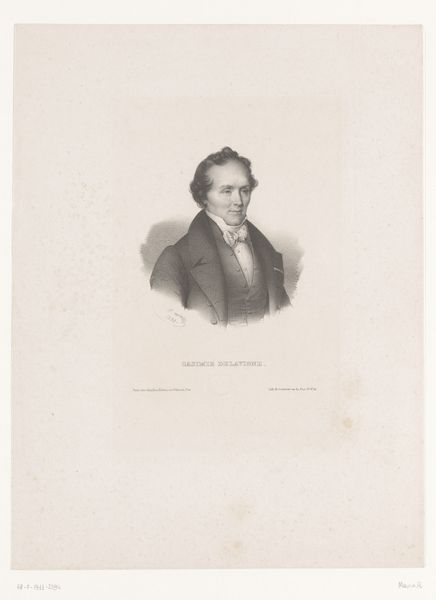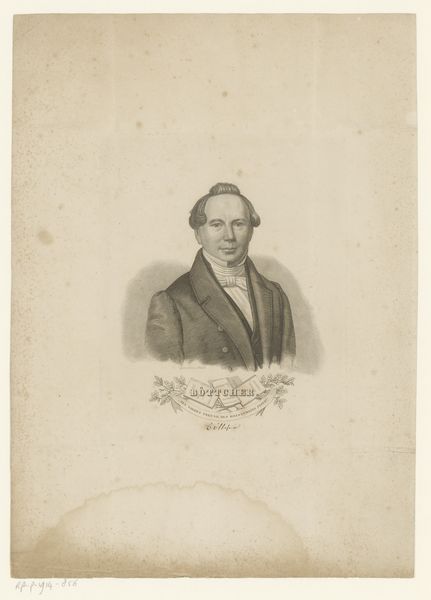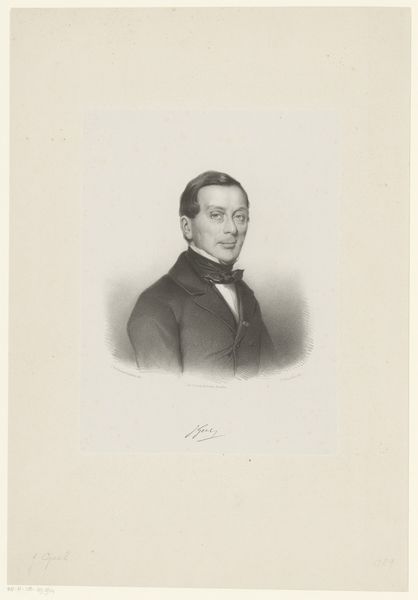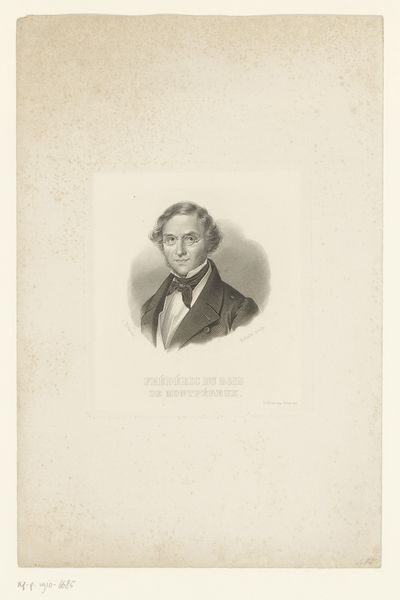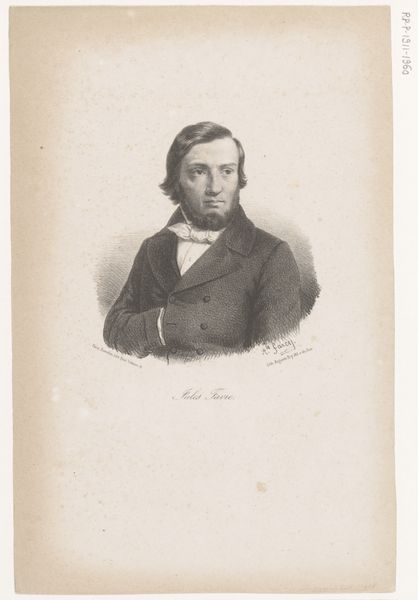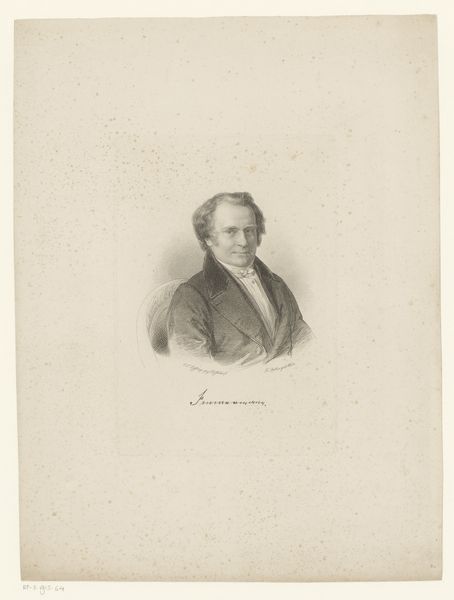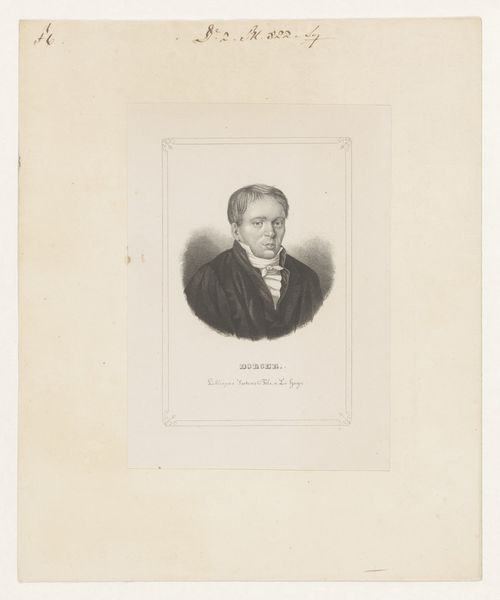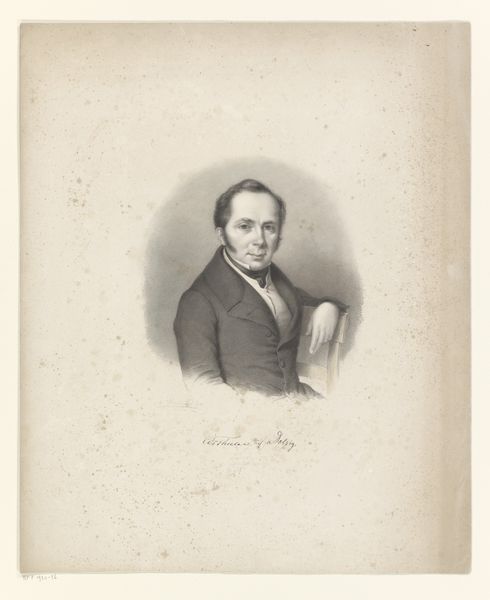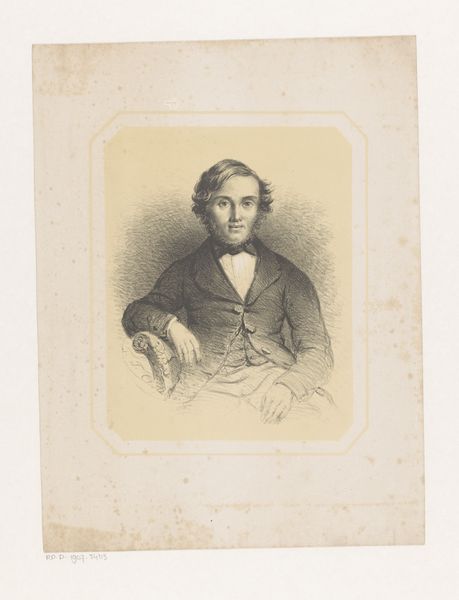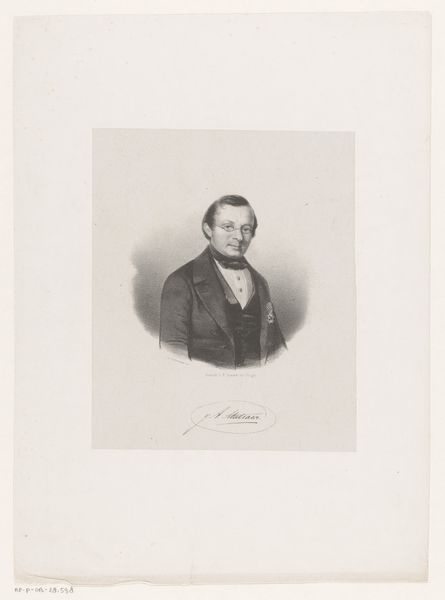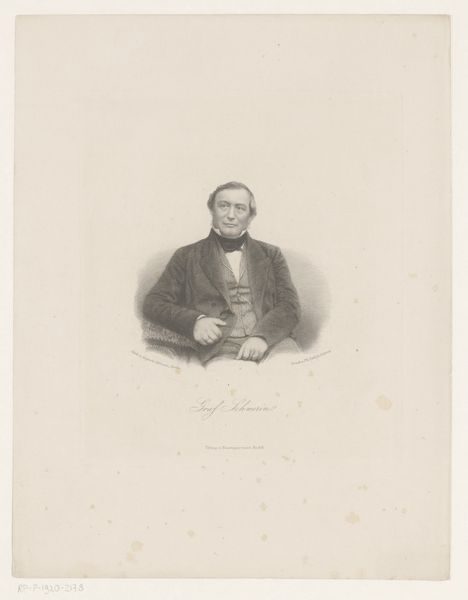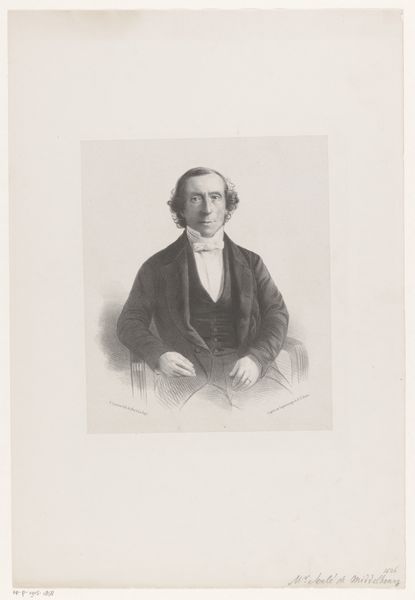
drawing, pencil
#
portrait
#
pencil drawn
#
drawing
#
light pencil work
#
pencil sketch
#
old engraving style
#
pencil drawing
#
pencil
#
pencil work
#
academic-art
#
realism
Dimensions: height 545 mm, width 364 mm
Copyright: Rijks Museum: Open Domain
Curator: What we have here is a pencil portrait from 1853, possibly of Corneille or Cornelis Vriesendorp, created by Leonard de Koningh. It strikes me as a very formal, almost severe depiction. What are your initial thoughts? Editor: It’s incredibly detailed, considering it’s just pencil. I'm curious about the artist's choice to use such a humble material for what seems to be an important commission, a portrait for posterity, maybe. Why not paint? Curator: Exactly! Let's consider the materiality of pencil. It is readily available, relatively inexpensive, and easily transportable. This immediately tells us something about the economics of art production at the time. The prevalence of pencil drawings in the mid-19th century is tied to its role in a growing print culture, allowing for easy reproduction through engravings, thus increasing the reach and influence of the artwork beyond its immediate elite circles. Does that suggest anything to you? Editor: So, it's less about high art and more about accessibility, almost like a proto-mass media approach? And perhaps it speaks to the social status of the sitter? Was pencil seen as a democratic medium? Curator: It definitely challenged the traditional boundaries of portraiture. The “humble” pencil allows for the detailed replication required in commercial engravings while remaining economically viable. It also points to a rising middle class who desire portraiture but do not necessarily have access to or the need for traditional oil paintings. Look closely at the subject’s clothes; the waistcoat and cravat. Consider also the labour involved in producing such items in 1853. The image and production become intrinsically linked don't you think? Editor: Absolutely, I hadn’t thought about it that way before. The choice of material speaks volumes about production, audience and social status, all connected. I will think more carefully now! Curator: Precisely. Next time you view "high art", always consider, "What are the humble origins behind its production?"
Comments
No comments
Be the first to comment and join the conversation on the ultimate creative platform.
